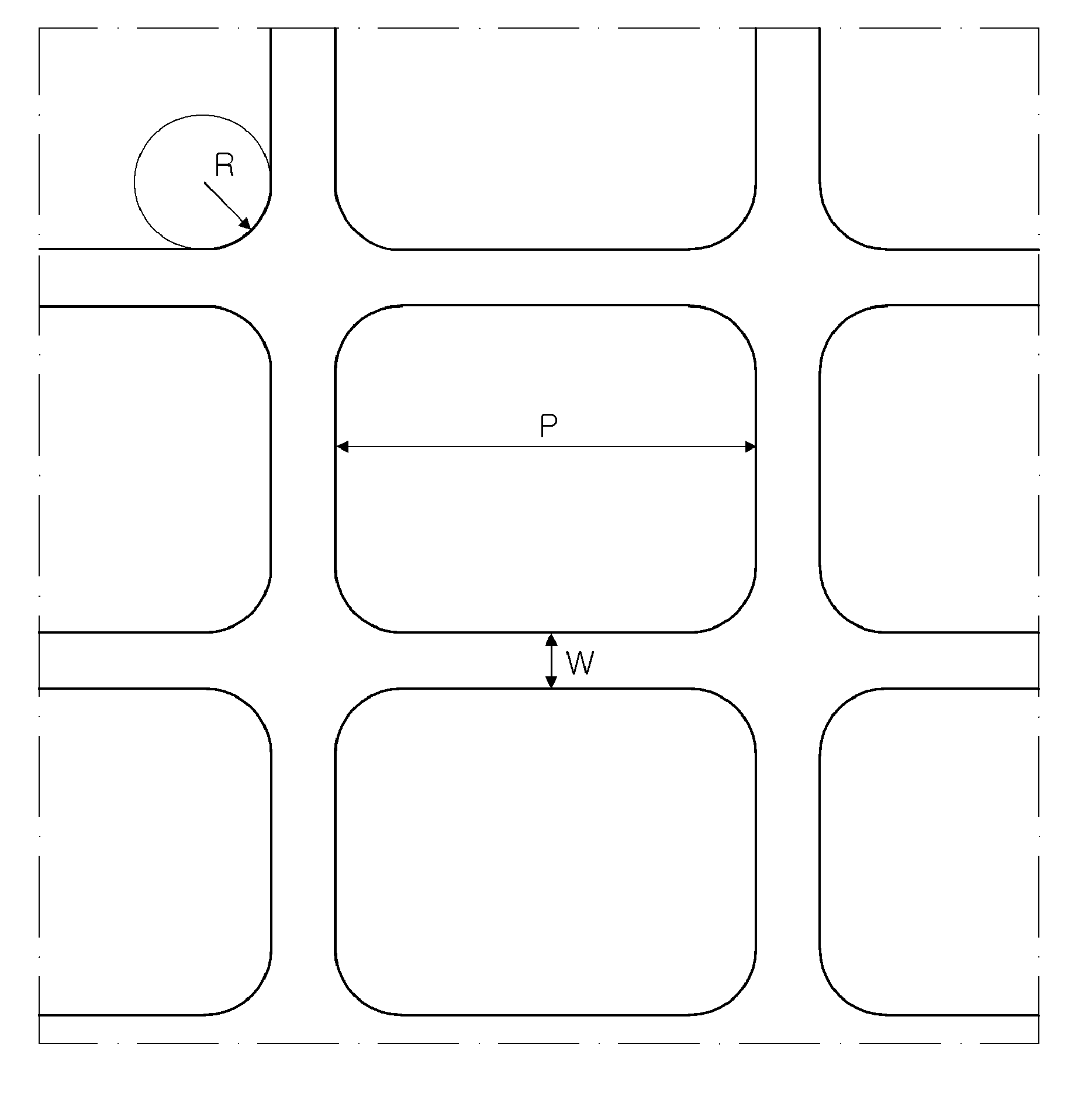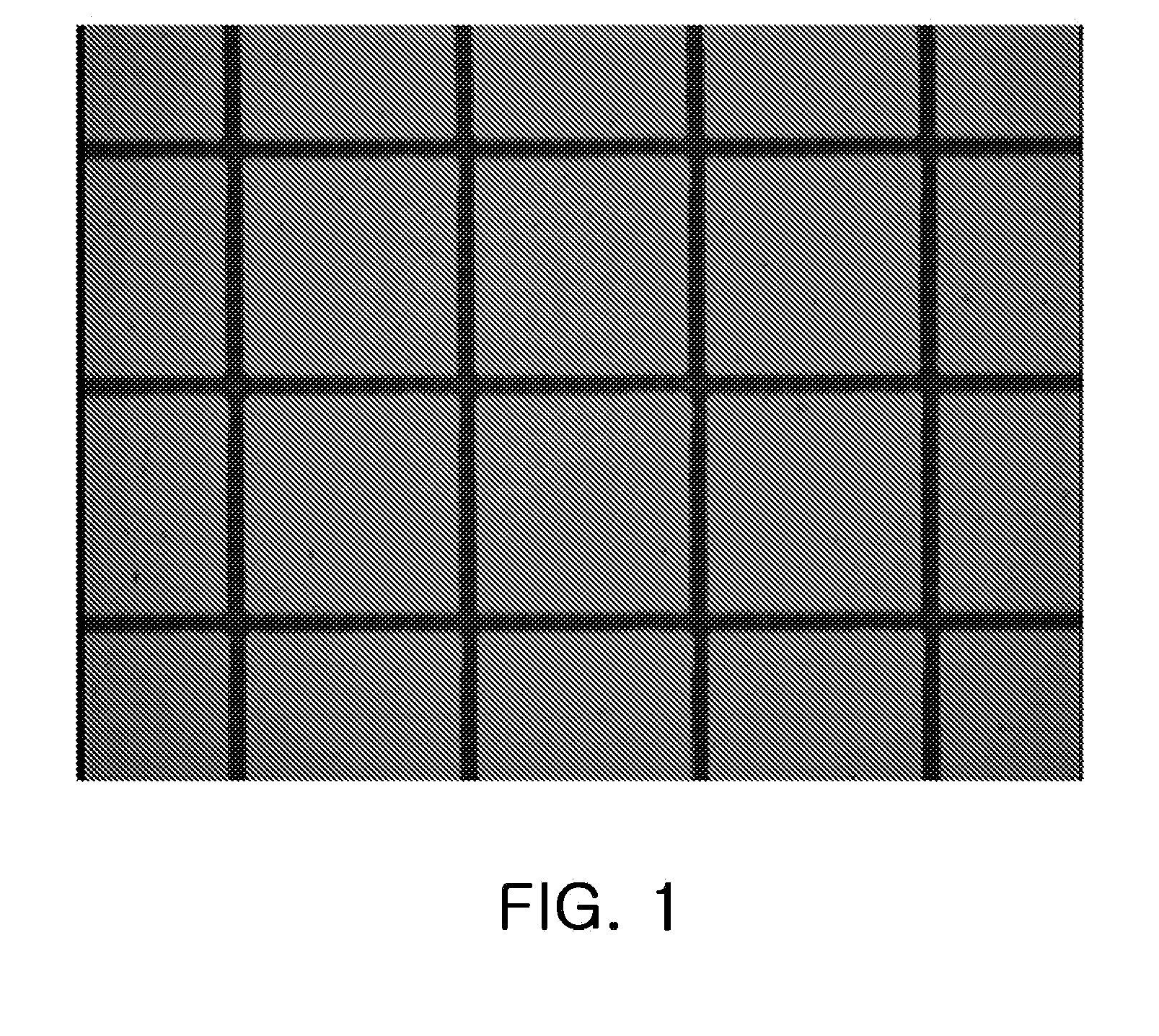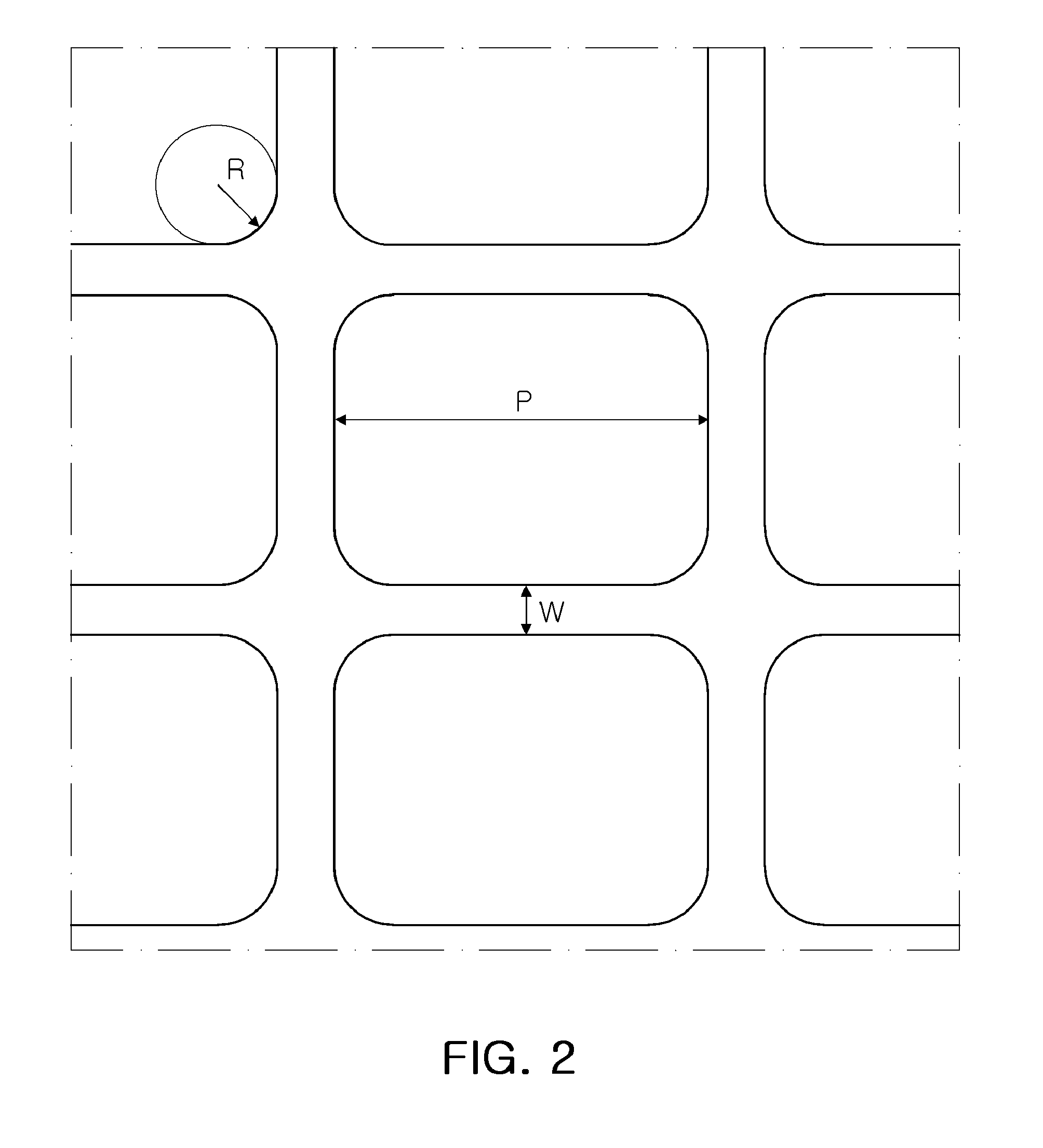Cliche for off-set printing and product manufactured using the same
a technology of offset printing and products, applied in foil printing, printing form reproduction, conductive pattern formation, etc., can solve the problems of inability to meet the requirements of the production process, so as to improve the surface resistance properties, prevent the effect of line width reduction, and increase the line width
- Summary
- Abstract
- Description
- Claims
- Application Information
AI Technical Summary
Benefits of technology
Problems solved by technology
Method used
Image
Examples
example 2
[0047]A printed material was prepared and the permeability, surface resistance, and reflectivity of the printed material were measured in the same manner as in Example 1, except that a printing plate having a pitch of about 270 μm, a line width of about 20 μm, and a depth of about 9.5 μm, in which a mesh pattern of intersection units formed in a curved shape with a radius of curvature of about 30 μm was intagliated, was used.
example 3
[0048]A printed material was prepared and the permeability, surface resistance, and reflectivity of the printed material were measured in the same manner as in Example 1, except that a printing plate having a pitch of about 270 μm, a line width of about 20 μm, and a depth of about 9.5 μm, in which a mesh pattern of intersection units formed in a curved shape with a radius of curvature of about 40 μm was intagliated, was used.
example 4
[0049]A printed material was prepared and the permeability, surface resistance, and reflectivity of the printed material were measured in the same manner as in Example 1, except that a printing plate having a pitch of about 270 μm, a line width of about 20 μm, and a depth of about 9.5 μm, in which a mesh pattern of intersection units formed in a curved shape with a radius of curvature of about 60 μm was intagliated, was used.
PUM
 Login to View More
Login to View More Abstract
Description
Claims
Application Information
 Login to View More
Login to View More - R&D
- Intellectual Property
- Life Sciences
- Materials
- Tech Scout
- Unparalleled Data Quality
- Higher Quality Content
- 60% Fewer Hallucinations
Browse by: Latest US Patents, China's latest patents, Technical Efficacy Thesaurus, Application Domain, Technology Topic, Popular Technical Reports.
© 2025 PatSnap. All rights reserved.Legal|Privacy policy|Modern Slavery Act Transparency Statement|Sitemap|About US| Contact US: help@patsnap.com



